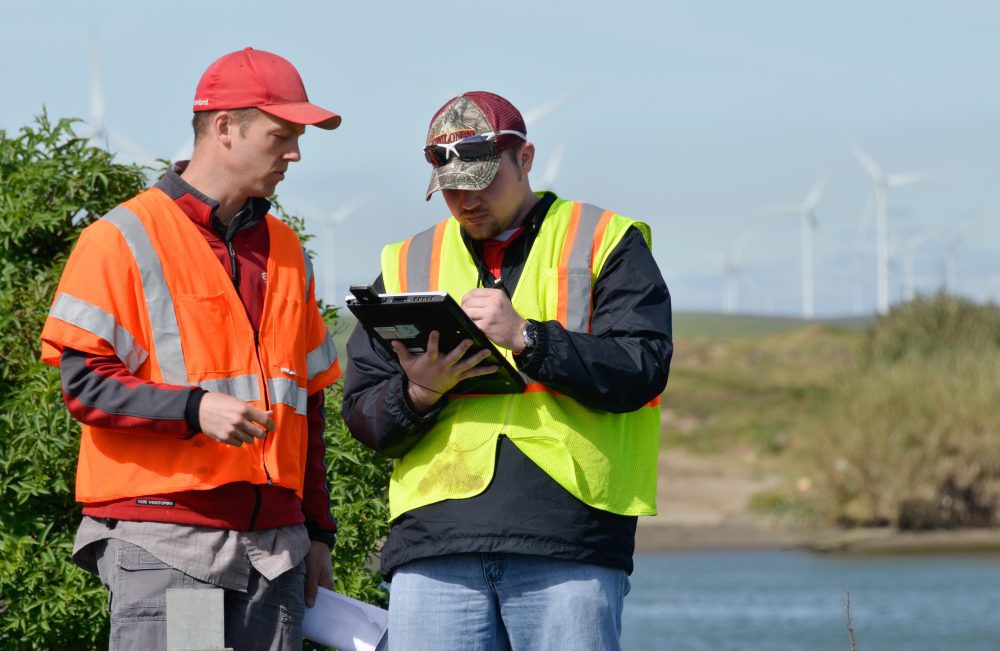The Heartland Center has just released the Spring 2018 edition of our Quarterly Occupational Safety & Health Newsletter. You can read the PDF version here, and the HTML version is available here. Please share the newsletter with your colleagues, either by printing out the PDF and posting it on your bulletin board or by sending them the link. Subscribe to our mailing list now to receive future issues, and please invite your friends to do the same!
The article below is an excerpt from the newsletter, which also features concise, informative items on severe spring weather safety, occupational asthma, and the May 7-11 Safety Stand-Down.

Best Practices for Safety Walk-Arounds
If you’re a manager looking for ways to actively improve the safety of your workplace, you should consider instituting a safety walk-around program. By regularly inspecting the workplace in person while workers do their jobs—and following up on what you learn—you can discover hazards you would have otherwise missed and build an organizational culture that values safety.
Walk-arounds can become an important plank in your safety program. In a three-part series of blog posts, James Loud, MPH, CSP, identifies General Motors, DuPont, the Tennessee Valley Authority, Honeywell, and the Los Alamos National Laboratory as examples of organizations with safety walk-around programs.
Before you begin your walk-around, determine which areas and tasks in your workplace are most hazardous by reviewing recent injury and incident reports. Make a list of previously identified hazards so that you can confirm that they’ve been addressed. Meet with safety representatives, other managers, and, if you have one, your company’s safety committee in order to get their perspectives on your most pressing safety issues.
Make sure that you know what safety guidelines you’ll need to follow on-site. If the workers you’re visiting are required to wear PPE, prep your own and practice using it correctly so you can set a positive example.
Finally, let workers know in advance when you’ll be coming and why. Your presence will inevitably affect how they perform their tasks, but this effect can be reduced significantly if you give them warning and assure them that you’re interested in an open, collegial conversation about their safety practices and needs. James Loud suggests stating explicitly that the walk-around will be fault-free. You’re not going to reprimand workers based on what you observe, but rather look for opportunities to collaborate on a safer workplace.
During your walk-around, keep your group small—you should only bring one additional person, or two at the most, for each walk-around, so as to make yourself approachable and skew worker behaviors as little as possible. On entering the worksite, begin by looking for obvious problems like tripping hazards, missing machine guards, poorly maintained equipment, and blocked exits. Ask workers to behave as they normally would.
Next, start an open-ended conversation with the workers. Ask them questions like, “What is the most hazardous part of your job? What do you recommend to eliminate those hazards? How would you report an injury, hazard, or near miss?” Ask them if they or anyone they know have ever been injured at this worksite. If they have, ask what caused it and what was done afterward to make their job safer. If you notice a violation of safety rules or procedures, ask the worker why that happened—again, making it clear that you’re not here to find fault. Take detailed notes.
After the walk-around, follow up on what you learned. Make an abatement plan that describes how and when you plan to address the hazards you found. In cases where more complicated efforts may be required, begin by establishing interim controls that can help to mitigate the problem in the meantime. Track your progress and share it with your colleagues. By acting decisively to improve your workers’ safety, you can build credibility as a partner, build stronger relationships between management and workers, improve employee morale, and reduce injuries in your workplace.
Further Reading
- Read OSHA’s fact sheet on safety walk-arounds.
- Read James Loud’s series on safety walk-arounds: one, two, three.



